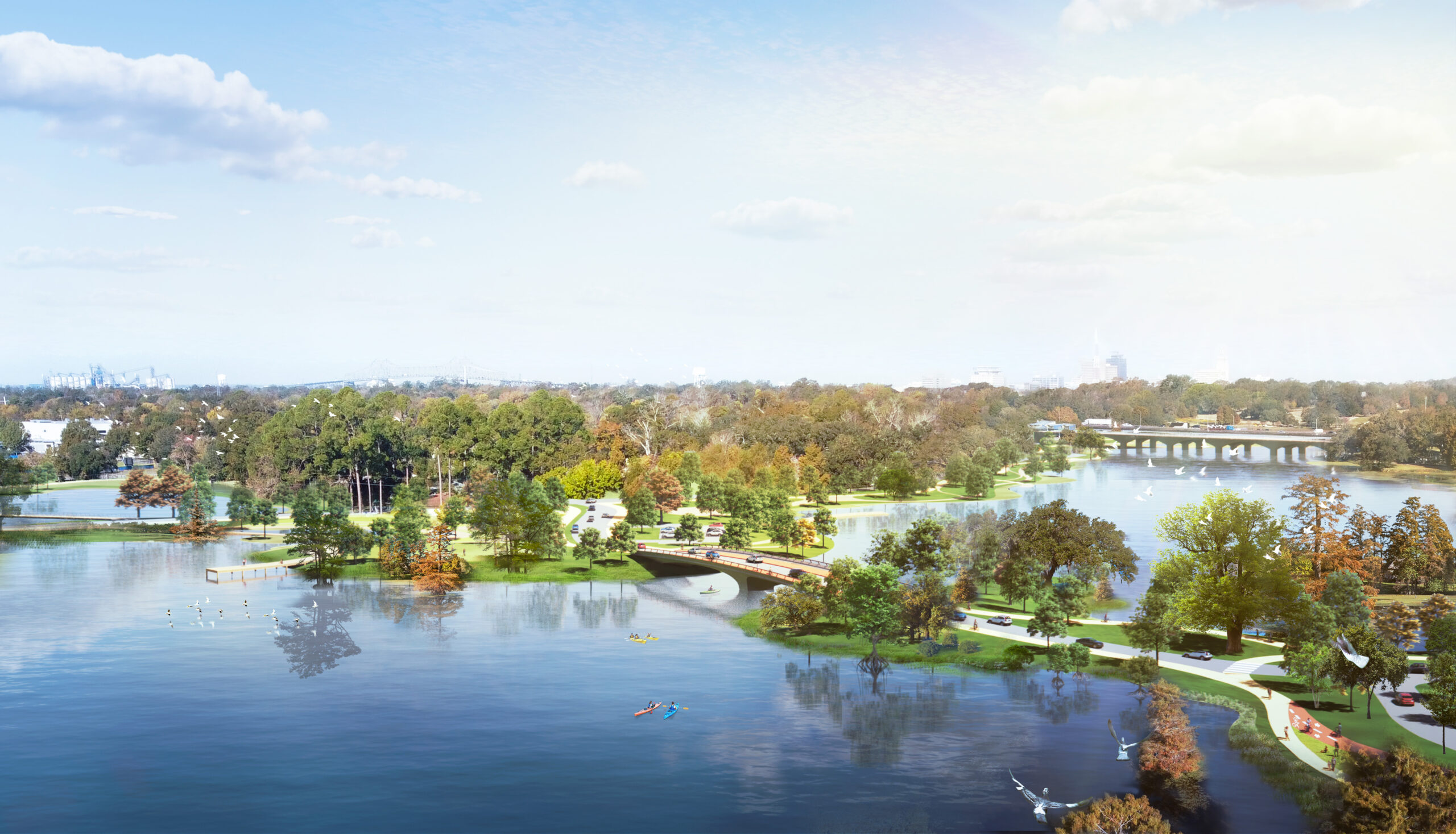
First phase of University Lakes improvement project starts this week
Pass by the University Lakes this week, and you’ll spot clues that Phase 1 of its long-awaited improvement project is about to begin. Many years in the making, the project received the final greenlight from the Army Corps of Engineers on June 6 and will start in earnest in early July, officials say.
Intended to improve the University Lakes system, the project includes dredging and deepening the lakes to amend their flow and water quality, and adding pedestrian paths and other enhancements to improve the user experience.
This week, residents will see contractors start staging equipment in May Street Park for Phase 1, which includes dredging City Park Lake and the small lake on its northeast side, Lake Erie. Expect to spot equipment in the water after July 4, says Mark Goodson, principal with project lead CSRS.
|
|
New York-based Sevenson Environmental is performing the dredging, which starts with cleaning up the lake bottom first, Goodson says.
“Specifically, they’ll start with what we call ‘raking’ the lakes, identifying and removing stumps and debris before they come in and dredge,” Goodson says.

Phase 1 also includes connecting the system’s two largest lakes, City Park Lake and University Lake, and making improvements to May Street, which runs between them and will be replaced by a new bridge.
“It includes realigning May Street, and improving the intersections at either end, both at Dalrymple and East Lakeshore to make them safer for vehicles and pedestrians and cyclists,” Goodson says. “It includes new pathways and lighting on either side for pedestrians and cyclists, and it will include a new hydraulic connection between University Lake and City Park Lake.”
Wildlife and recreational users will be able to pass back and forth between both lakes.
The May Street bridge and improvements are still under design. Its construction won’t start until closer to the end of the year, Goodson says.
Another component of Phase 1 includes the installation of a forebay, a hydraulic system for trapping sediment, at the north end of City Park Lake.
“The forebay will trap the sediment that enters the lakes system from Bayou Duplantier before it gets dispersed across the lakes,” Goodson says. “(Sediment buildup) is the main reason that the lakes have become so shallow.”
University Lake will be dredged and improved in Phase 2.
The Phase 1 dredging will increase the depth of the lakes to about 6 feet in most places, and 9 feet near the forebay, Goodson says. Along with sediment buildup, the lakes’ current shallow depth is due to their original identity as a swamp whose Cypress trees were cut down in the 1930s as part of a WPA project.
Baton Rouge has been discussing dredging the lakes to deepen and improve them for decades, but the project has been seen as expensive and complicated due in part to the many remaining stumps and large amount of debris on the lake bottom.
Phase 1 is budgeted at $32 million.

One thing you won’t see anytime soon, Goodson says, is the so-called Stanford Boardwalk, a planned pedestrian bridge over University Lake that would enable walkers and joggers to cross between East Lakeshore Drive and South Lakeshore Drive without using Stanford Avenue, a fast-moving thoroughfare with no shoulder. Originally part of Phase 1, the project has been delayed because of costs running higher than expected on the raking and dredging, Goodson says.
“(The Stanford Boardwalk) is not funded or part of Phase 1 or Phase 2 at this point, but it is still in the plans as funding becomes available,” Goodson says. “As cost estimates came in higher than expected for Phase 1 and we had to reduce the scope, that was one of the things to get pulled out.”
A big question throughout the project has been what will happen to the soupy materials dredged from the lake bottom. That’s actually been the purpose of the small island that seemed to pop up out of nowhere last year in University Lake. It’s been a test balloon for planners and the Corps of Engineers to learn more about the composition of the mud.
Using the findings, contractors now have a strategy for depositing the dredge materials from Phase 1 to create “living shorelines,” shorelines made of natural materials, along parts of City Park Lake. Goodson says construction crews will not add materials to areas with stands of mature Cypress trees in order to protect their health. A large amount of the material will also be pumped to the periphery of the LSU Bird Sanctuary on University Lake, Goodson says.
The lakes project received an additional $20 million in Priority 1 funding from the Louisiana Legislature in the 2023 session—about half the required funding for Phase 2. That will enable the Phase 2 to start immediately on the heels of Phase 1’s conclusion, Goodson says. For more information, unversitylakesproject.org.
|
|
|

